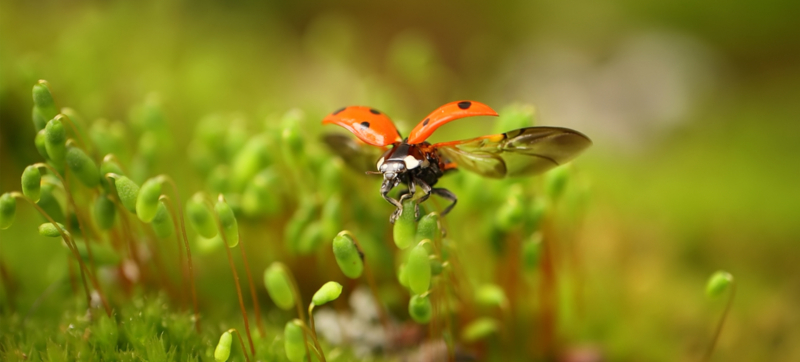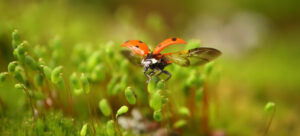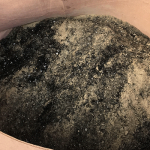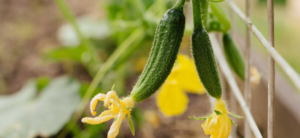
What Is A Ladybug?
Ladybugs are often called ladybirds, ladybeetles, or ladybird beetles. These are small insects from the Coccinellidae family. They're quite famous for their striking appearance, which typically includes a bright red or orange shell with black spots.
However, it's interesting to note that their color can vary, including shades of yellow, black, and sometimes pink.
These insects are smaller than a centimeter and have a distinctive dome-shaped body with six legs. They play a crucial role in controlling pests in gardens and farms by feeding on harmful insects like aphids and scale insects. This natural pest control ability makes them invaluable in agriculture.
You can find them in different environments, such as forests and grasslands to urban areas like gardens and riverbanks. In some cultures, they are symbols of good luck and prosperity.
One fascinating aspect of these insects is their defense mechanism. When threatened, they can release a yellow fluid from their legs, which is a deterrent to predators.
This foul-smelling fluid is a defense mechanism known as "reflex bleeding." The odor and the fluid help to deter predators, as it signals that the ladybug might not be a tasty or safe meal. The smell can be noticeable to humans, especially if there are many ladybirds or if they are disturbed in your home.
Also, their vibrant coloration serves as a warning of their awful taste to potential predators.

What Do Ladybugs Eat?
Coccinellidae are interesting little insects with a large appetite for plant-eating pests.
Ladybugs enjoy feeding on aphids. Aphids are tiny bugs that can be harmful to plants. Ladybugs help gardeners and farmers by eating these aphids. In return, it helps not only keep the aphid population in check but also keeps plants healthy.
The pretty beetles also snack on other soft-bodied insects like scale insects, mealybugs, and mites. Sometimes, when their preferred food is scarce, they might even eat pollen or nectar.
This varied diet makes them incredibly useful in controlling various garden pests naturally. By eating these harmful insects, ladybugs play a key role in maintaining the health of our gardens and crops.
Do Ladybugs Bite?
Ladybugs can bite, but it's rare and usually harmless. Generally, ladybugs bite only when they feel threatened or are searching for moisture. Most of the time, they are completely safe and beneficial insects to have around.
The Benefits of Ladybugs in Your Garden
These tiny, colorful beetles offer a natural and effective way to keep your garden healthy. The main benefit lies in their appetite for aphids and other harmful pests that can damage plants.
By consuming these insects, ladybugs prevent infestations and reduce the need for chemical pesticides. This can help make your garden safer and more eco-friendly. Their presence can encourage biodiversity, creating a more balanced and sustainable garden ecosystem.
Ladybugs are also easy to attract and maintain, simply by planting certain flowers or avoiding pesticides. Welcoming these little helpers into your garden can lead to healthier plants and a more vibrant outdoor space.
Species of Ladybugs in North America
The United States is home to a diverse range of ladybug species, each with its unique bright colors and patterns.
Among these, the red ladybug with black spots is the most recognized. But did you know about the yellow ladybug and the orange ladybug?
These are just as common, though not as famous. The yellow often has black spots, while the orange might have either black or no spots. Another species is the pink-spotted ladybug, which has a charming pink hue.
These different types all play a similar role in controlling pests, making them invaluable in any garden. We think it’s pretty remarkable how much variety exists within this one family of tiny, beneficial insects!

How To Buy Lady Bugs
When purchasing ladybugs, look for native species and purchase them from reputable sources to prevent ecological imbalances.
Here at Hydrobuilder.com, we sell ladybugs from multiple brands such as Tip-Top Bio, Arbico Organics, and others coming soon. Shop our entire selection of beneficial insects here.
Our lady beetles all are shipped within 48 hours to ensure arrive to our customers alive and healthy.
What is The Best Way to Feed Ladybugs
Ladybirds thrive in environments rich in aphids and other small insects. At Hydrobuilder, we sell food and attractants. This allows gardeners to keep these awesome bugs around to benefit the garden long term.
Cultivating a diverse garden with plants that attract these insects can provide ample food for ladybugs.
Ways to Attract Ladybugs to Your Garden
These insects go to gardens with plenty of food sources. This is especially true during mating and egg-laying seasons. They seek warmth and sheltered places like leaf litter for hibernation.
Ladybug Life Cycle
The ladybug life cycle comprises four stages: egg, larva, pupa, and adult.
Egg Stage:
It starts when this little insect lays their eggs, usually on the underside of a leaf. She chooses a spot where her babies, called larvae, will find food (like aphids) as soon as they hatch.
Larva Stage:
The eggs hatch into ladybug larvae, which look different from adults. These larvae are super hungry and eat lots of aphids.
Pupa Stage:
After eating a bunch, the larva turns into a pupa. It attaches itself to a leaf and starts changing into an adult. This is similar to how a caterpillar turns into a butterfly.
Adult Stage:
In the adult stage, the pupa opens, and out comes the adult ladybugs. Now it's ready to fly around, eat more pests, and eventually lay its eggs.
Frequently Asked Questions and Answers About Lady Bugs
One question we get is if these insects sleep on their backs. If you notice one on its back, it may be dead or hibernating.
How can you tell if’s is male or female? It can be difficult without a microscope, but females are generally larger.
Another popular question is if ladybugs are poisonous or not. They are not poisonous to humans, but their bite might cause an allergic reaction in sensitive individuals.
Final Thoughts About Ladybugs
Ladybugs are fascinating and beneficial insects, playing a vital role in our ecosystems. Understanding and appreciating their life cycle, diet, and behavior can greatly enhance our gardening practices and promote biodiversity.
Need more help? Call one of our representatives at 888-815-9763 with any questions you may have.

















